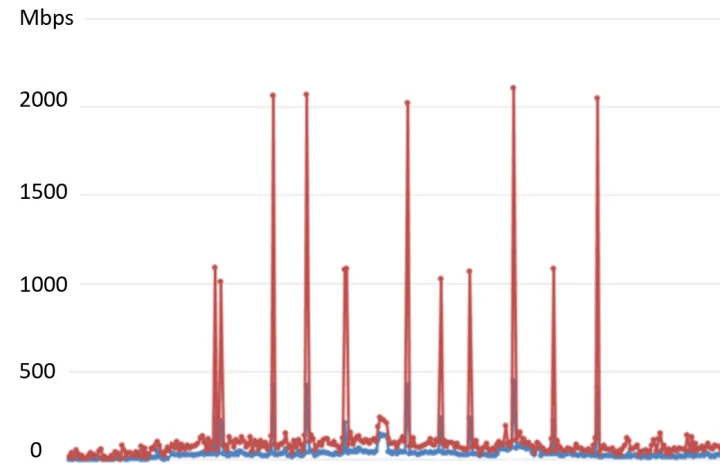1. Introduction
After the development from xDSL (2M) and FTTB (10M) to FTTH, the bandwidth of home broadband has been stuck at 100M for nearly 10 years. In 2019, with the construction of 5G, the download rate of 5G mobile phones can reach up to gigabit. Therefore, starting in 2019, home broadband has also begun a new round of speed-up. Gigabit home width is coming.
In order to cooperate with the construction of gigabit home broadband, many operators started the upgrade and transformation of xPON, and upgraded the original GPON/EPON to 10G-PON.
Is 100M home broadband really not enough? After the home broadband bandwidth is upgraded, is it necessary to deploy 10G-PON equipment in each OLT room?

2. Bandwidth requirements of home internet services
With the development of Internet services, home internet services have become more and more abundant in recent years. The services that require large bandwidth mainly include the following.
| Categories | Type | Advanced configuration(M) | Intermediate configuration(M) | Basic configuration(M) |
| Voice call | Fixed telephone (VOIP) | 1 | 0.5 | 0.1 |
| HD video conferencing/Telephony | 8 | 4 | 2 | |
| Web browsing | Web browsing | 30 | 20 | 8 |
| Video | SD video | 2 | 2 | 1 |
| HD video | 5 | 4 | 4 | |
| Ultra HD video | 18 | 13 | 8 | |
| 4K video | 72 | 55 | 40 | |
| 8K video | 120 | 120 | 120 | |
| VR video | 1140 | 420 | 120 | |
| Game | Real-time game | 2 | 2 | 2 |
| VR game | 1500 | 540 | 130 |
It can be seen that the services that require the greatest bandwidth are video services. Since high-definition and ultra-high-definition videos have basically met the needs of users, the current video services are mainly high-definition and ultra-high-definition videos.
Although there are more and more 4K program sources, it is rare that a family needs multiple channels of 4K video. Even if there is, 200M can easily handle it. As for 8k, there is still a lack of terminal and program source support.
VR was once considered an important engine for driving traffic. But judging from the current sales, although the price of VR glasses is cheap, the sales volume is not large, only a fraction of the gigabit wireless router.
Therefore, 100M+ (200M, 300M, 500M, etc.) will meet the needs of most families in the next 2 to 3 years, and 100M+ (200M, 300M, 500M, etc.) will have certain needs in rental houses and a few families with high requirements for video services, and gigabit needs are limited to a small number of users who need to experience VR services.

3. Does Gigabit Home Broadband Need to Deploy 10G-PON?
Regardless of the actual need or not, in 2020, the Internet speed of many users are upgraded from 100M to 200M or even higher. Of course, the user experience is indeed improved after the upgrade, for example, browsing the web is smoother, and video playback is less stuttering.
At present, the PON network of the operator mostly adopts GPON, and the downstream bandwidth of the PON port is 2.3G, but what is the actual flow rate of the PON port?
Since the flow rate of the PON port in the GPON network management is an average value of 15 minutes, when the peak flow rate of the PON port reaches the bandwidth of the PON port, the user experience will be affected.
However, there is no clear correspondence between the peak flow rate of the PON port and the value in the network management system. Therefore, it is necessary to test the flow rate of the PON port through a special test tool. We analyzed the peak flow rate (second level) of about 15,000 PON ports in a capital city (only PON ports with traffic flow were counted).
| Peak flow rate (Mbps) | Number of PON ports (pcs) | Proportion |
| 0-50 | 6427 | 36.65% |
| 50-100 | 7169 | 40.88% |
| 100-200 | 3615 | 20.61% |
| 200-400 | 257 | 1.47% |
| >400 | 70 | 0.40% |
| Maximum value | 1378Mbps | |
Although the average number of users per PON port in this city is as high as 35, the peak flow rate of the PON port is not high, and only less than 0.5% is larger than 400M.
Will the flow rate of the PON port increase significantly if the user port is upgraded to Gigabit? of course! It only lasts for a very short period of time, which is usually caused by user speed testing or downloads. Obviously, if the user’s service requirements do not change much, the user bandwidth upgrade will not greatly impact the PON port traffic.

At present, the unit cost of XG-PON is several times that of GPON. It is really a waste of money to deploy 10G-PON on a large scale when the peak flow rate of the PON port is extremely low!
4. Conclusions and suggestions
Although 100M home broadband can meet the bandwidth requirements of most families, after the bandwidth upgrade, it can cover up network quality problems such as ONU weak light and poor home wifi coverage; and users have a better experience when measuring speed and downloading, and operators do not need much investment. Therefore, in the environment of “speed increase and fee reduction” and “F5G”, it is necessary for operators to increase the speed of home broadband. However, when the actual peak traffic of the PON port is extremely low, it is completely unnecessary to deploy 10G-PON on a large scale, and the original GPON equipment can be used to directly increase the speed.
In economically developed cities, the difference between the peak traffic of different PON ports can reach tens or even hundreds of times, and the current PON network management generally does not have the second-level monitoring capability. It is obviously inappropriate to deploy 10G-PON according to the number of gigabit users carried by the PON port. The top priority is to deploy a second-level monitoring platform for PON, and deploy 10G-PON according to the actual peak flow rate of the PON port.




